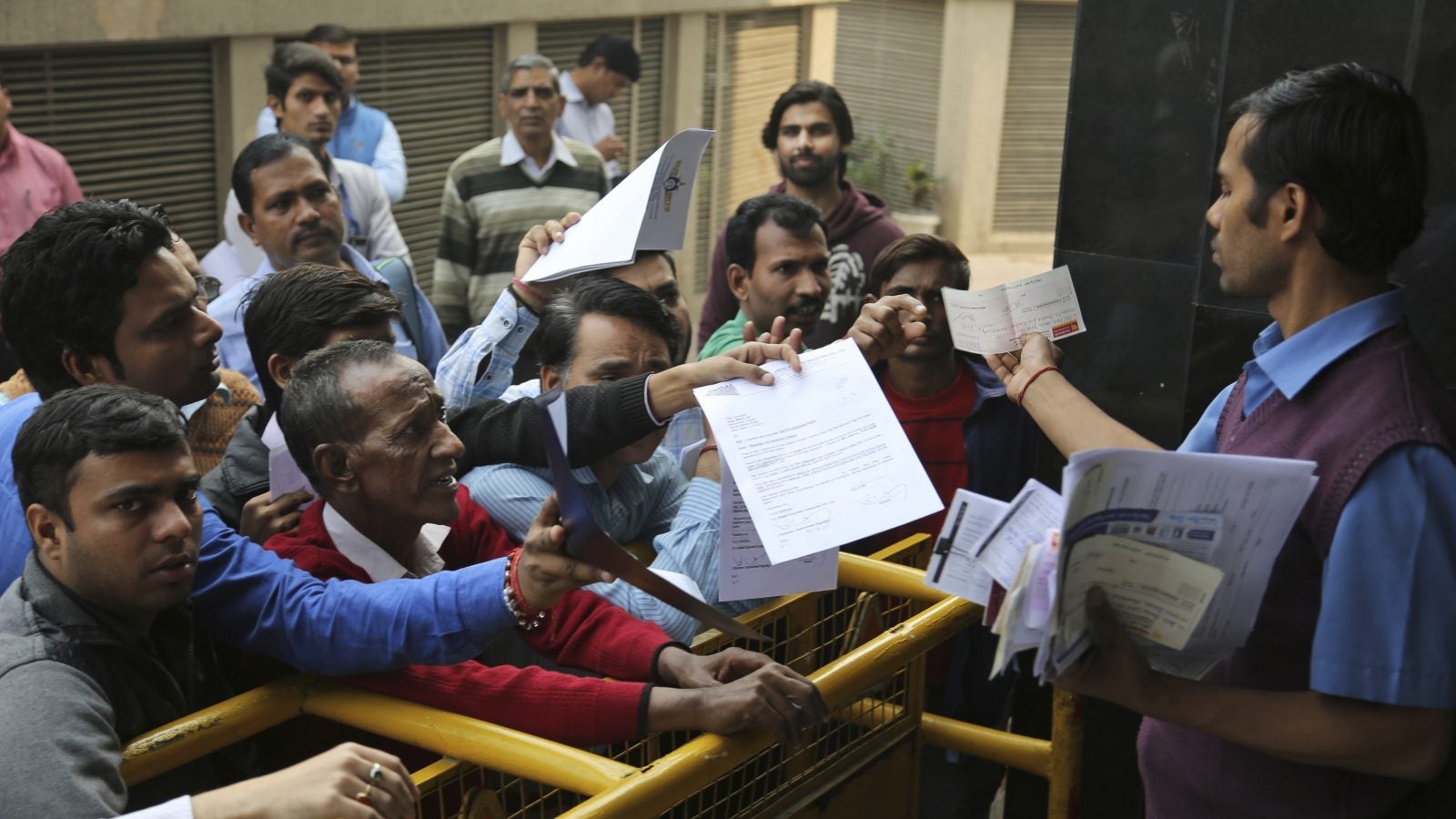Angry Indians are complaining about their banks like never before
Tired of being pushed around by banks over unresolved problems and unsatisfactory services, more and more customers in India are now dragging lenders to higher authorities.


Tired of being pushed around by banks over unresolved problems and unsatisfactory services, more and more customers in India are now dragging lenders to higher authorities.
Grievances registered with the various banking ombudsmen across the country increased by 27% in financial year 2017 (April 2016-March 2017) compared to the previous year. There are 20 ombudsmen offices spread across the country, covering the 29 states and seven union territories, which act as nodal agencies for banking-related consumer complaints.
In all, more than 130,000 complaints were reported at these offices in 2017, according to a report released by the Reserve Bank of India on Dec. 19.
“This rising trend, while reflecting the increasing awareness about the BOS (banking ombudsman scheme), also underlines the need for banks to strengthen their internal grievance redressal mechanism,” BP Kanungo, deputy governor of the RBI, said in the report.
Typically, when a customer has a problem regarding any service or product, the individual is required to first raise it with the concerned bank. However, if the lender’s response is unsatisfactory the customer can approach the banking ombudsman. Earlier, the RBI had directed 34 banks to also appoint internal ombudsmen (IO) to review complaints independently before they are escalated to the banking ombudsmen. “However, the rising number of complaints received at the banking ombudsmen reflects a need for strengthening the implementation of the IO scheme,” Kanungo said.
What did they complain about?
Most consumers complained that banks do not adhere to rules and regulations. This usually pertains to a wide range of grievances, from not sanctioning a loan in time to unfair treatment meted out to an individual.
An increasing number of complaints were also about ATM and debit cards, followed by pension payments, deposit accounts, etc. Recently, the central bank expanded the purview of complaints considered by the banking ombudsman’s office, including customers’ grievances against mis-selling of insurance, mutual funds, and other such financial instruments.
Interestingly, private banks, usually perceived to be better at their services than government banks, have seen the number of complaints registered against them rise faster—by 30% in 2017 from the previous year. Overall, though, public sector banks still had the lion’s share (62%) of complaints, but that’s because they serve many more customers. Private lenders accounted for 26.5% of all complaints, while the rest were against foreign banks, regional rural banks (RRBs), and urban co-operative banks that weren’t so cooperative after all.